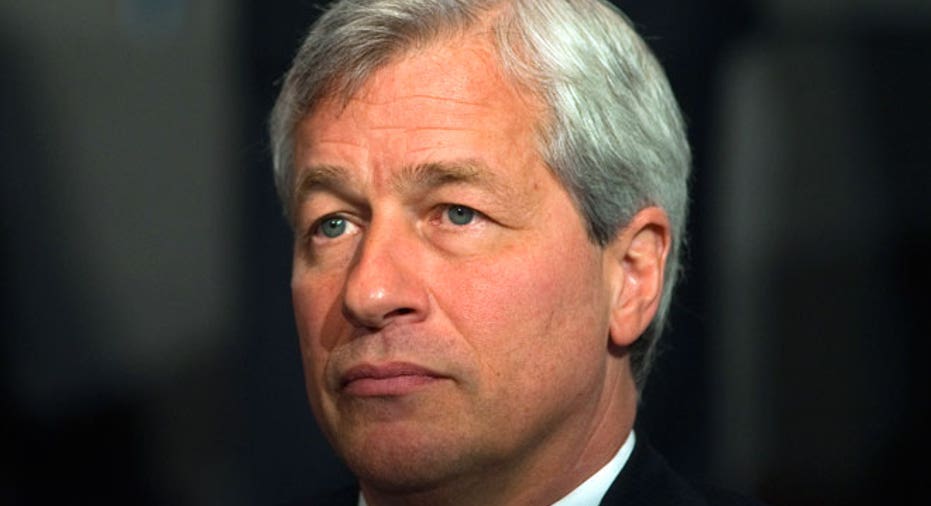JPMorgan CEO Dimon: Regulatory Reform 'Flashing Red to Green'

Executives at J.P. Morgan Chase & Co. struck an upbeat tone during the firm's annual investor day, painting a picture of bank businesses mostly poised for growth.
That marked a change from presentations in previous years when the largest U.S. bank by assets has had to defend its size, strategy and prospects as the financial sector struggled with stiffer regulation, low interest rates and hefty legal bills.
The optimistic outlook comes against the backdrop of buoyant stock markets, particularly for financial shares. After Donald Trump's surprise election as U.S. president, banks' shares have soared, with J.P. Morgan's stock up nearly 30% since Nov. 8.
J.P. Morgan Chairman and CEO James Dimon said the new presidential administration has political, legal and regulatory areas going from "flashing red to flashing green."
And the bank's finance chief, Marianne Lake, said Tuesday that prospects look good, even without the possible regulatory and tax overhauls by Mr. Trump.
The bank expects its balance sheet to increase to about $2.6 trillion this year from $2.49 trillion at the end of 2016. In recent years, the bank has held its total assets steady or shrunk them in the face of regulatory changes.
Executives said core loans should increase about 10% over a year earlier, and the bank expects $30 billion in net income over the medium term. In 2016, J.P. Morgan posted record net income of $24.7 billion.
During Tuesday's presentations, J.P. Morgan also placed less emphasis on cost-cutting, which had been a big theme for it and other banks in recent years.
Expenses this year are expected to rise to roughly $58 billion to self-fund investments and growth in 2017, versus $56 billion in 2016.
Improvements in oil prices and the energy sector's recovery may also lead the bank to release a portion of its $1.5 billion in energy-related loan-loss reserves. Any significant reserve releases would occur in the second half of this year or later, Ms. Lake said.
As for Washington, Ms. Lake spelled out the bank's wish list, or "principles for responsible regulation." It includes coordination and consistency among agencies; aligning rules across global jurisdictions, especially eliminating the "gold-plating" that has made U.S. rules more stringent than others internationally; and reviewing the regulatory landscape in the context of cost benefits and economic growth.
"The time does feel right to provide more...flexibility," she said. Potential changes may not necessarily mean less regulation but may revolve around how rules are implemented, Ms. Lake said.
Mr. Dimon, who serves on President Trump's economic council, echoed her sentiments. "We want a collaborative regime to talk about these things," he said.
Among the bank's individual businesses, commercial banking chief Doug Petno detailed continued boosts in investment banking and middle-market revenue. The latter, he said, could turn into a $1 billion business.
Corporate and investment banking chief Daniel Pinto said the bank doesn't have to increase its risk to boost its profitability. "I have no doubt this business will grow," he said.
Mr. Pinto also injected a note of caution around markets activity. "I'd rather be a bit more cautious in the way we plan, the way we deliver, manage our expenses," he said.
In asset and wealth management, chief Mary Callahan Erdoes emphasized the bank's growth across the spectrum, from retail wealth-management clients to ultrahigh-net-worth customers. She focused on five- or 10-year returns in asset management rather than more challenging near-term conditions.
On the consumer banking side, chief Gordon Smith said the unit has completed nearly all of its $2.4 billion of cost-cutting and is keeping a close eye on other opportunities. He emphasized the need to continue delving into digital and mobile banking.
Executives also repeatedly referred to technology investments and digital advancements -- led by Matthew Zanes, chief operating officer, and Dana Deasy, chief information officer -- that help to cut costs or boost revenue. J.P. Morgan for the first year set up a detailed display with about a dozen stations featuring applications and programs built through its roughly $9 billion in technology investments.
Write to Emily Glazer at emily.glazer@wsj.com
(END) Dow Jones Newswires